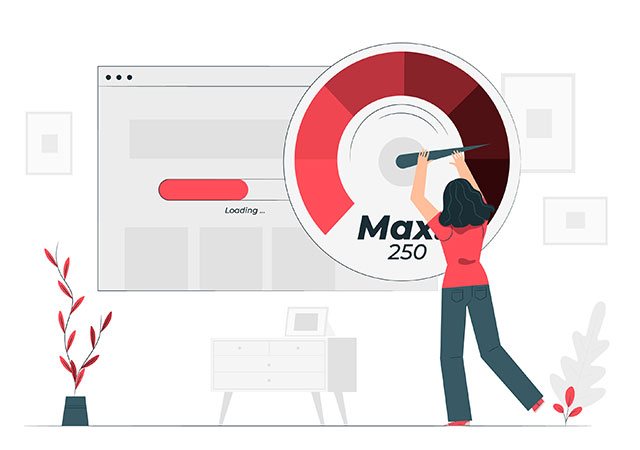Optimizing your Magento 2 store for speed is one of the most important things you can do to improve your site’s performance. Luckily, there are several simple techniques you can implement to speed up your website. These techniques include HTTP/2, JS Bundling, Lazy loading, and CSS Concatenation. These can help your website load faster and increase your conversion rate.
JS Bundling
JS Bundling is an important optimization practice for Magento 2. It can reduce the number of connections and improve page speed. By bundling all your JS files, you can reduce the number of connections between your website and the server. The optimization method also reduces the number of files that have to be downloaded, which helps your site load faster.
It reduces the number of connections per page, and loads all the JS files in one file. After the
browser caches these bundles, the performance of your site will improve significantly. If your
Magento storefront takes a long time to render, it will affect user experience. It will also be
slower on mobile devices, which are typically not as fast as desktops. Therefore, the JS
Bundling mechanism is a great way to optimize your site’s speed before the holiday season.
Another great option for reducing the number of JS files on your website is to use a JS
Bundling tool such as Browserling. You can use this tool to create a JS bundle for all of your
Magento 2 pages. It also allows you to make a custom bundle for your site that is tailored to
your specific needs.
In order to improve the speed of your Magento site, it is important to follow a few essential
speed optimization practices. First, you need to address the N+1 query problem. This is a
common problem among custom applications, and Magento stores are no different. Another
important speed optimization practice for Magento 2 is HTTP2 compatibility. By using HTTP2
compatibility, you can avoid a number of perf problems.
Next, you can optimize your CSS files. These files comprise of the images, CSS files, and
JS files. These files can all be bundled together to reduce the number of requests.
Combined together, they can dramatically reduce the size of your page.
Lazy loading
If you want your Magento store to load faster, consider using Lazy Load. This new feature will enable you to download products and images on demand, which will benefit both your customers and your website. The extension also improves performance and SEO rankings. It also improves user experience by decreasing page load time. To set up the extension, simply configure it in the admin panel.
Another great feature is dynamic retargeting, which can help you regain lost sales. For instance, you can offer a discount to new customers, or offer a free gift with a purchase. This will make new visitors feel welcome to your Magento 2 store. And make sure to offer instant support to any visitors who need it.Other useful features include: Magento’s Infinite Scroll extension, which supports lazy
loading and Back to top. It also lets customers view product details and add them to the cart.
It also allows them to leave feedback, share product reviews, or submit their feedback.
Furthermore, it allows administrators to customize the look and feel of navigation bars.
Magento 2 also offers the ability to enable a corresponding PayPal Multi-Currency extension.
This allows users to complete their transactions in the currency of their choice. This
extension also allows you to add a store locator, which is helpful for customers to find your
physical stores. Moreover, it offers a one-step checkout, which optimizes the user
experience and prevents cart abandonment. Finally, if you’re looking for a powerful loyalty
program, try Magento’s Reward Points. This extension provides a highly customizable way
to create a strong loyalty program.
With all these extensions, your Magento store can be even more responsive and mobile-
friendly. A mobile-specific layout and retina-ready support make the theme easy to use on a
smartphone, tablet, or desktop. You can install over 20 extensions from the Magento Store
Extension Marketplace to create a beautiful, responsive site. It also has a one-click demo
import feature for customizing the theme to fit any need. You can even install multiple color
schemes and Google Fonts to customize your store.

JS Concatenation
JS Concatenation is one of Magento’s speed optimization practices that can greatly improve the performance of your storefront. This method helps reduce the number of HTTP requests your website makes by joining together multiple small files into one large one. This method also reduces the size of your web pages, which means your Magento storefront will load faster.
If you’ve been using a third-party live chat module to handle customer support and other
customer interactions, you’ve probably noticed that JS Concatenation can make your site
more responsive. By pre-flighting the live chat script to be executed later, you can avoid slow
page load times. This method allows Magento to postpone the script until it’s ready to load.
Once the JS files are loaded, Magento will combine them into one large bundle. To prevent a
slow page load, you can postpone the live chat script until the browser has finished
downloading all the JS bundles.
Another effective method of Magento 2 speed optimization is to use a full-page cache. This
method creates cached versions of your pages and delivers them to the user. It is important
to remember that this method does not work on cart pages. These pages are dynamic,
meaning that they have different content than the other pages.
Aside from using JS Concatenation, other essential practices for Magento 2 speed
optimization include using the correct operating mode. The fastest Magento 2 mode is
Production mode, which generates static view files in advance and serves them from cache.
In addition, it’s important to avoid bloated themes that affect performance. These themes are
prone to bulky JS files and unnecessary requests, which will affect the user experience.
CSS Concatenation
If you run an online store, speed is a vital factor to your success. Your customers will be more likely to stay on your site if your pages are fast and responsive. Additionally, a fast online store will be more appealing to a large audience and increase your conversion rate and revenue.
CSS concatenation helps reduce the number of server requests and CSS file size. This can
reduce the size of CSS by up to forty percent. Moreover, minification can reduce file size by
20 to 40%. Luckily, Magento 2 includes a tool for minification of CSS and JS files.
Whether your website is custom-coded or purchased from a third-party developer, the speed
of your website depends on how quickly you can load your content. Most users will abandon
your site if it is slow to load. Studies show that 47 out of 100 visitors will leave your site
because of this reason.
Using CSS concatenation is one of the best ways to speed up Magento by reducing server
response time. This method allows CSS to be combined with HTML to make your site look
better. Another way to speed up your site is to host your store near your target audience.
While this method may not be possible for some users, you can use a hosting provider that
has a CDN to reduce server response time.
It’s important to know your website’s speed before beginning any optimization project. If you
don’t know what the problem is, you might end up optimizing the wrong thing and wasting
your valuable time. To find out which aspects of your site need improving, you can use a free
tool called Google PageSpeed Insights. The tool will give you a list of solutions to your
Magento store’s performance issues.
Image compression
Compressing images is a crucial part of improving your website’s performance. Compressing images can either be done in a lossless or lossy manner. Often, combining the two techniques will result in the best performance. If you’re not sure what compression method to use, you can use an online tool or an extension for Magento that will help you optimize your images.
Using image compression is one of the easiest ways to improve the speed of your Magento
2 website. You can either use a CDN service or manually compress each image on your site.
Either way, you’ll improve the speed of your website. JPEG format is the most popular
option, but if you’re using complex images or logos, you can try the SVG format. Another
lesser-known format is WebP, which offers the same quality as JPEG but is significantly
smaller. Although it’s less popular than JPEG, it is supported by most major browsers,
although it won’t display on Safari or IE.
Image optimization is essential for eCommerce websites. Image files make up approximately
70% of a page’s weight, so image compression can make a big difference in how fast a page
loads. To improve image loading time, you can use an image optimization tool, which will
automatically compress JPG, PNG, GIF, or BMP files. This service is affordable and offers
several other benefits.
Aside from image compression, other speed optimization techniques include optimizing
image file names and ALT tags. These tags describe the content of an image, which is
beneficial for search engines. If your images are large, you can use an image optimization
extension like TinyPNG. These tools will help your website load faster without sacrificing
image quality.


